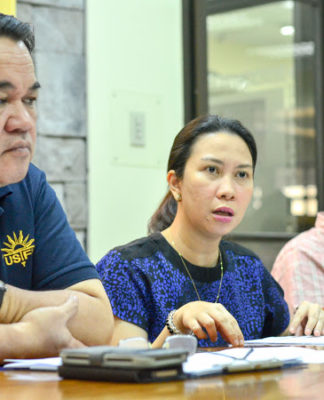A FROG-KILLING fungus has reached the Philippines.
Experts believe the Batrachocytrium dendrobatidis (Bd), a fungus that causes the lethal frog disease called chytridiomycosis, arrived in the Philippines through foreign carrier frogs.
College of Science professor Mae Lowe Diesmos and her team composed by Dr. Rafe Brown from the University of Kansas and Dr. Arvin Diesmos, curator of amphibians and reptiles at the National Museum of the Philippines, found signs of Bd fungus in four species of local frogs. Out of 20 frogs from Cavite and the Bicol region tested, five were positive for the fungus.
“There were no visible signs of the fungal disease among local frogs. We just [considered the possibility] that they have it,” Diesmos said.
Diesmos’ team is still in the process of testing the frog species in the country to see how far the fungus has spread. Diesmos said that of about 110 species of frogs in the country, the research team has run tests on an estimated 30 species from Cavite, Northern Luzon, Bicol, Negros, Zamboanga, Iligan, and Butuan,.
“Not all species were tested because some of these frogs don’t come out of their natural habitats while the others are confined in one specific locality,” she said.
Philippine frogs in danger
Diesmos and her team have been sampling live frog skins for the past two years as part of their study on foreign frogs that may have brought the fungus to the Philippines.
Discovered in 1990 in South Africa, chytridiomycosis is a disease caused by the Bd fungus that creates deformities in tadpoles and consumes keratin, a kind of protein found in the skins of adult frogs and toads. Loss of this protein in frogs causes difficulty in breathing, which may lead to death.
“It is important to study these invading species because they could mean trouble for the native frogs,” she said. “Some of them can compete against native frogs for food and resources, while some of them can become carriers of disease agents, like the chytrid fungus.”
In their article Field-Sampling Protocol for Batrachochytrium dendrobatidis from living amphibians, Dr. Joseph Mendelson III, the acting executive officer of the World Conservation Union, Amphibian Specialist Group, and his associates studied how fast Bd fungus spread when amphibian populations in North America, Asia and Africa declined dramatically. Scientists said the fungus’ spread may had been caused by forest destruction and climate change since the fungus spreads faster in cold climates.
Diesmos said the Bd fungus may have reached the country with the arrival of foreign frogs, which acted carriers of the fungus.
“The frogs may have arrived either by accidentally boarding ships headed for the Philippines or by being brought to the country to get rid of the insects in the farms,” she said. “Alien frogs may be more resistant to the fungus, and only acted as carriers who infected the local species, particularly the river and stream frogs.”
But Diesmos clarified that while the Bd fungus had invaded the country, the situation is not yet alarming.
“The country is still at an early stage of the spread of the disease. However, if the fungus wipes out frog species, it can lead to disruption of the food chain that will eventually affect us humans,” she said.
She stressed the need for the country’s researchers to focus on the prevention of fungal spread.
“It is important for us to focus first on expanding our knowledge about the fungus to prevent its spread,” Diesmos said. “We are collaborating with the other researchers from around the world to include the Philippines in the list of countries that have confirmed presence of the fungus in their local frog population, for research purposes.”
The researchers are seeking the help of the Department of Environment and Natural Resources to incorporate their findings with the department’s biodiversity monitoring system to document the spread of the Bd fungus.
“The information gathered can then be used to improve and support adaptation planning measures for surrounding communities in areas that are identified to be infected by the fungus,” she said. Julienne Krizia V. Roman with reports from Alena Pias P. Bantolo
















